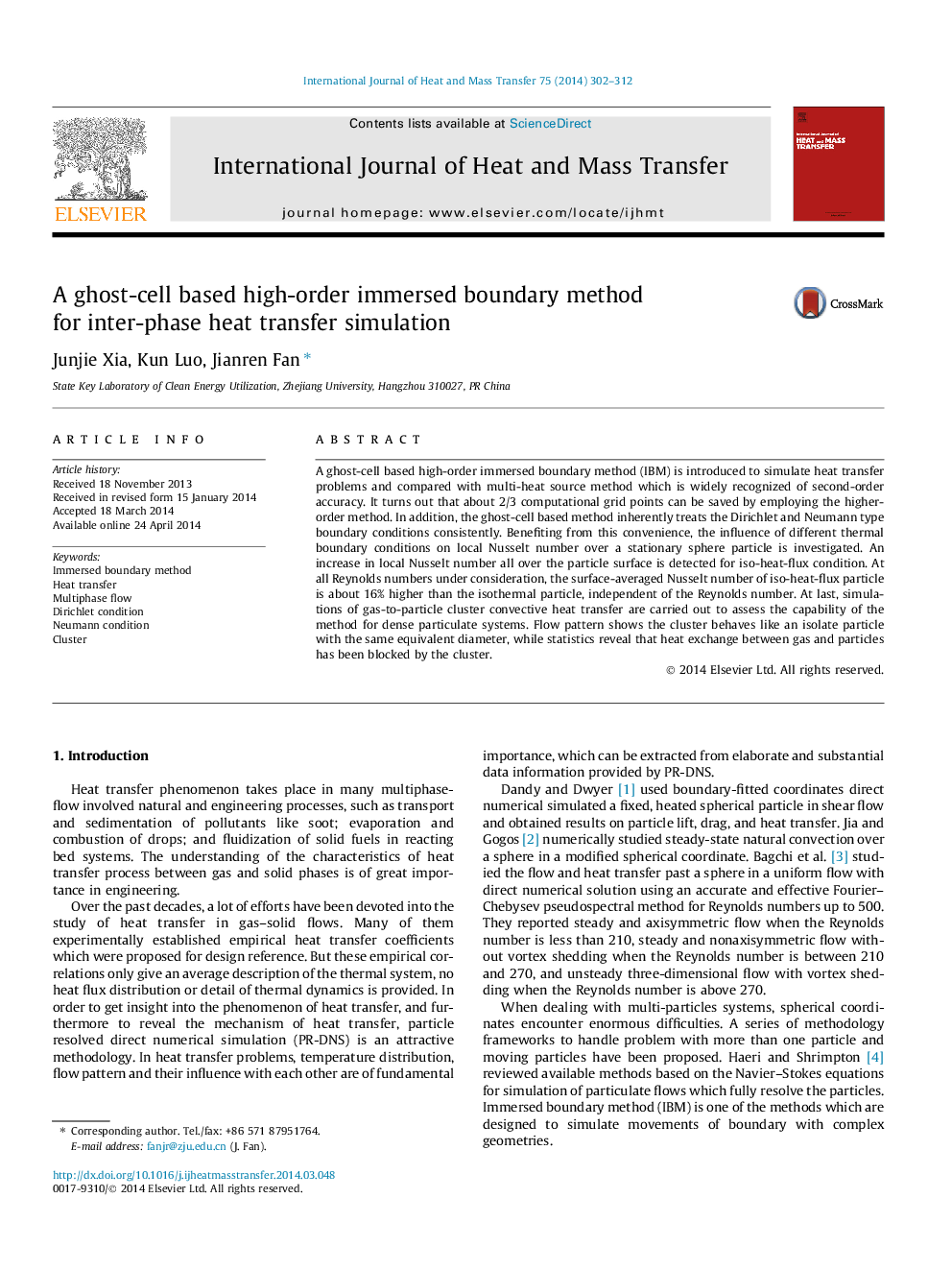| Article ID | Journal | Published Year | Pages | File Type |
|---|---|---|---|---|
| 7056956 | International Journal of Heat and Mass Transfer | 2014 | 11 Pages |
Abstract
A ghost-cell based high-order immersed boundary method (IBM) is introduced to simulate heat transfer problems and compared with multi-heat source method which is widely recognized of second-order accuracy. It turns out that about 2/3 computational grid points can be saved by employing the higher-order method. In addition, the ghost-cell based method inherently treats the Dirichlet and Neumann type boundary conditions consistently. Benefiting from this convenience, the influence of different thermal boundary conditions on local Nusselt number over a stationary sphere particle is investigated. An increase in local Nusselt number all over the particle surface is detected for iso-heat-flux condition. At all Reynolds numbers under consideration, the surface-averaged Nusselt number of iso-heat-flux particle is about 16% higher than the isothermal particle, independent of the Reynolds number. At last, simulations of gas-to-particle cluster convective heat transfer are carried out to assess the capability of the method for dense particulate systems. Flow pattern shows the cluster behaves like an isolate particle with the same equivalent diameter, while statistics reveal that heat exchange between gas and particles has been blocked by the cluster.
Keywords
Related Topics
Physical Sciences and Engineering
Chemical Engineering
Fluid Flow and Transfer Processes
Authors
Junjie Xia, Kun Luo, Jianren Fan,
